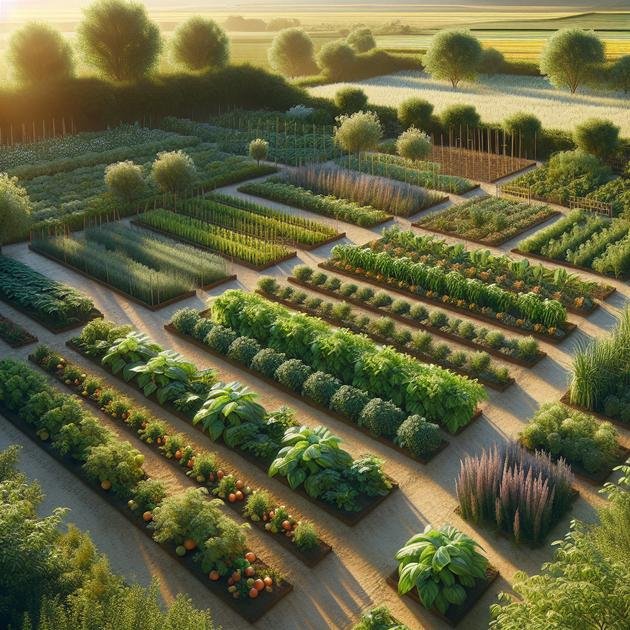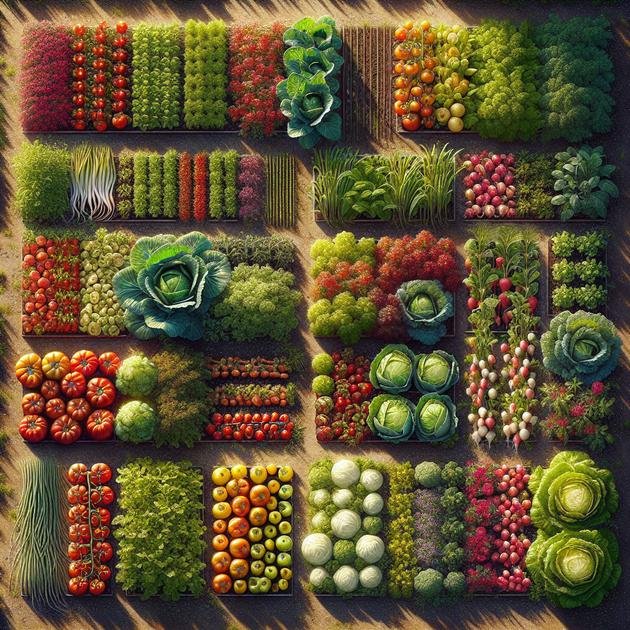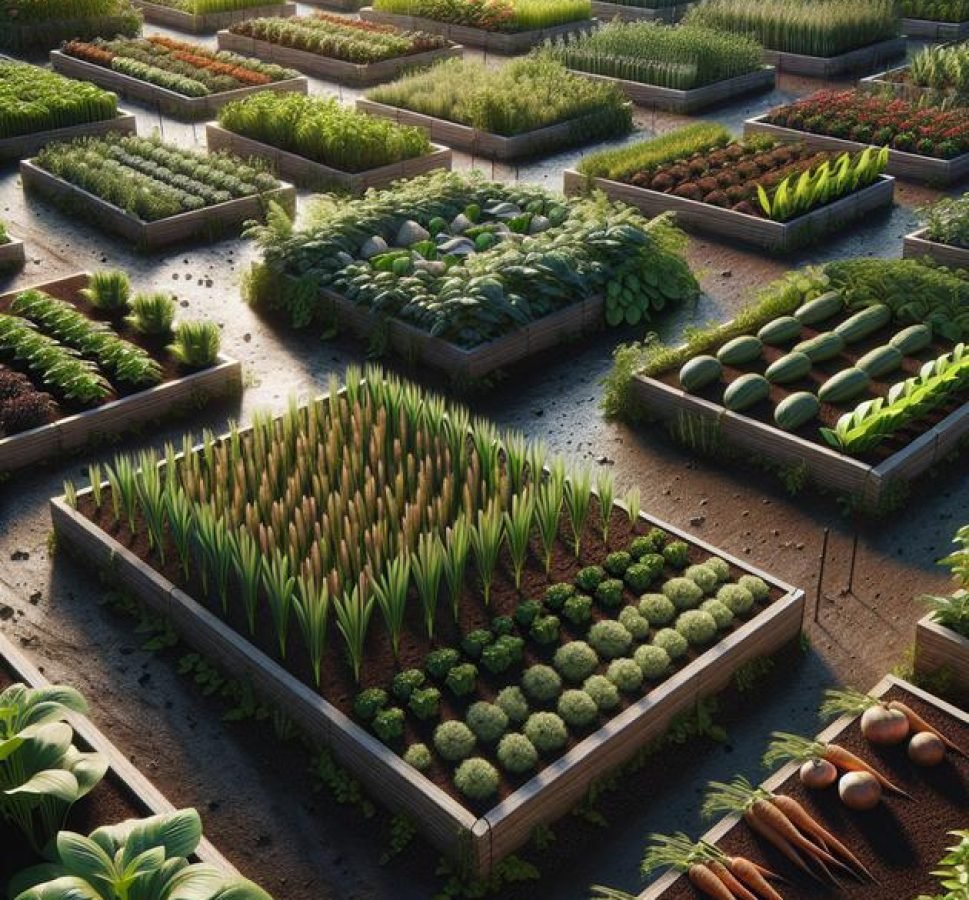Succession planting vegetables involves strategically timing and spacing plantings of different crops to ensure a continuous, year-round harvest, maximize garden productivity, and extend the growing season.
If you’ve ever wondered how to keep a steady supply of fresh produce, succession planting vegetables may be your answer. This clever method keeps your garden busy, so you rarely have empty beds and always have food to pick.
what is succession planting and why it matters
Succession planting is a gardening technique where crops are planted in a planned sequence to maximize yield and ensure continuous harvest throughout the growing season. Instead of planting all seeds or seedlings at once, you space out planting times so that when one crop finishes, another is ready to take its place.
This method matters because it helps increase your garden’s productivity without requiring additional space. It keeps your beds producing fresh vegetables consistently, reducing gaps between harvests that often waste garden potential.
How succession planting works
You can stagger planting by sowing seeds every few weeks, or by replacing early crops with a mid- or late-season variety as soon as they’re harvested. For example, you might plant radishes first, which grow quickly, then immediately follow with slower-growing carrots.
Benefits beyond continuous harvest
Succession planting also helps manage pests and diseases by interrupting their lifecycle. It can improve soil health by alternating plant families and give you a steady supply of fresh, diverse vegetables.
Understanding and applying succession planting can transform your garden into a more efficient, productive space that better feeds you all year long.
planning your garden calendar for continuous harvests
Effective planning of your garden calendar is essential to achieve continuous harvests through succession planting. Start by identifying the growing seasons and the days to maturity for each vegetable you want to grow. This helps you schedule planting dates to avoid gaps between crops.
Mapping out planting dates
Create a simple calendar showing when to sow seeds, transplant seedlings, and harvest crops. For example, plant a fast-growing crop like lettuce every two to three weeks. Once harvested, replace it with a longer-season vegetable such as broccoli or cabbage.
Consider climate and frost dates
Understanding your region’s last and first frost dates is crucial. Plant cool-weather crops early in the season and transition to warm-weather plants as temperatures rise. In fall, reverse the process with cold-tolerant varieties to keep your garden productive.
Use overlapping and staggered planting
Overlapping plantings allow you to have different crops maturing at the same time, while staggered planting means starting new seeds at set intervals. Both strategies help maintain a steady supply of vegetables.
Adjust your calendar each year based on your garden’s unique conditions and your family’s preferences. This dynamic plan will keep your garden busy and productive all year.
choosing the right vegetables for succession planting

Choosing the right vegetables is key to successful succession planting. Focus on crops with varying maturity times, growth habits, and seasonal preferences to keep your garden productive.
Fast-growing vegetables
Include quick harvest crops like radishes, lettuce, and spinach. These can be planted early and harvested before slower crops need the space, making room for the next planting.
Slow-growing crops
Vegetables like broccoli, cabbage, and tomatoes take longer to mature. Plant these after or alongside fast growers to balance your garden’s timing and space.
Cool and warm season vegetables
Choose cool-weather crops such as peas and kale for early spring or fall planting. Warm-season vegetables like beans and peppers thrive in summer. Mixing these helps extend your harvest through different seasons.
Compatible crop families
Rotate between different plant families to reduce pest issues and improve soil health. For example, after planting legumes, follow with leafy greens that benefit from nitrogen-rich soil.
Planning your vegetable choices with these factors ensures you optimize space, soil use, and timing, resulting in a continuous and diverse harvest throughout the year.
soil preparation tips to support ongoing planting
Proper soil preparation is vital for successful succession planting as it ensures healthy plants and continuous productivity. Start by testing your soil’s pH and nutrient levels to understand what amendments are necessary.
Improving soil fertility
Add organic matter like compost or well-rotted manure to enrich the soil. This improves texture, moisture retention, and provides essential nutrients for growing vegetables.
Soil aeration and drainage
Loosen compacted soil by tilling or using a garden fork. Good aeration allows roots to grow deeply and access oxygen. Also, ensure proper drainage to prevent waterlogging that can damage plants.
Mulching for moisture and weed control
Apply mulch around your plants to keep soil moist and reduce weed growth. Mulch also helps regulate soil temperature, promoting steady growth.
Crop rotation and soil rest
Plan to rotate crops and allow some areas to rest or grow cover crops. This prevents nutrient depletion and reduces pests and diseases, supporting sustainable succession planting.
Consistent soil care between planting cycles will keep your garden fertile and ready for the next planting, maximizing vegetable yields year-round.
how to space and time your plantings effectively
Proper spacing and timing are critical to maximize your garden’s productivity with succession planting. Correct plant spacing allows each vegetable enough room to grow without overcrowding, which reduces disease and competition for nutrients.
Understanding spacing requirements
Refer to seed packets or plant guides to determine the recommended distance between plants and rows. For example, leaf lettuces may need 6 to 8 inches apart, while larger crops like cabbage require more space.
Timing your plantings
Space your sowing dates based on each crop’s maturity time. Plant fast-growing crops every 1-3 weeks to ensure new plants are ready as others finish harvesting. This avoids empty garden beds.
Using succession intervals
Succession intervals are the days between planting the same crop multiple times. For instance, sow carrots every 2-3 weeks for a steady supply.
Companion planting considerations
Consider planting compatible crops near each other to improve growth and deter pests. Timing their growth cycles so they mature together can save space and increase yield.
Effective spacing and timing create a rhythm in your garden that keeps plants healthy and your harvest constant throughout the season.
dealing with common challenges in succession planting

Succession planting can face several common challenges, but understanding them helps maintain a healthy and productive garden. One major issue is managing pests, which can quickly spread when plants are densely packed.
Controlling pests naturally
Use companion plants like marigolds and basil to repel harmful insects. Handpicking pests and applying organic sprays like neem oil also reduce damage without harming your garden’s ecosystem.
Preventing diseases
Rotate crops each season to avoid disease buildup in the soil. Proper spacing and airflow reduce fungal infections. Removing dead plants promptly prevents disease spread.
Dealing with variable weather
Unexpected frost or heat waves can disrupt planting schedules. Use row covers to protect young plants and provide shade during extreme heat. Adjust your calendar based on local weather trends each year.
Maintaining soil health
Continuous planting can deplete nutrients, so regularly add compost and organic fertilizers. Allow sections of your garden to rest or grow cover crops like clover to restore soil vitality.
Adapting and monitoring your garden frequently will help you overcome these challenges and sustain ongoing success with succession planting.
harvest techniques to maximize vegetable yield
Proper harvest techniques are essential to maximize your vegetable yield in a succession planting garden. Knowing when and how to harvest each crop helps encourage continuous production and keeps plants healthy.
Harvesting at the right time
Pick vegetables at their peak ripeness for the best flavor and nutrition. For example, harvest lettuce leaves when they are young and tender, and tomatoes when they have full color but are still firm.
Regular harvesting encourages growth
Frequent picking of crops like beans and peas promotes the plant to produce more pods. Don’t let produce remain on the plant too long, as it signals the end of the growing cycle.
Harvesting techniques for different vegetables
Use scissors or garden shears to cut leafy greens and herbs to avoid damaging the plant. For root vegetables, gently pull or dig them out without disturbing nearby plants. Handle fruiting crops carefully to prevent bruising.
Post-harvest care
After harvest, clean and store vegetables properly to maintain freshness. Remove any dead or diseased plant material from the garden to reduce pest and disease pressure.
Mastering harvest timing and methods ensures your garden remains productive and provides a steady supply of fresh vegetables throughout the season.
using succession planting to extend your growing season
Succession planting is a powerful method to extend your growing season and enjoy fresh vegetables longer. By staggering plantings and selecting crops suited for different temperatures, you can keep your garden productive from early spring to late fall.
Start early with cool-season crops
Begin your garden with cold-tolerant vegetables like spinach, kale, and peas. These thrive in cooler temperatures and can be planted as soon as the soil is workable.
Transition to warm-season crops
As the weather warms, replace early crops with heat-loving vegetables such as tomatoes, peppers, and beans. This shift ensures continuous harvests during the peak growing months.
Prepare for fall with hardy varieties
In late summer, begin planting fall crops like broccoli, carrots, and radishes. Many of these tolerate cooler temperatures and even light frost, extending your garden’s productivity.
Use season extenders
Techniques like row covers, cold frames, and greenhouses help protect plants from early frost or extend the growing environment. They can add weeks or even months to your season.
By carefully planning and using succession planting strategically, you maximize your garden’s output and enjoy fresh produce across more months of the year.
Mastering succession planting for a fruitful garden
Succession planting vegetables is a smart way to keep your garden productive and fresh throughout the year. By planning carefully, choosing the right crops, and managing soil and planting times, you can enjoy a steady harvest.
Overcoming common challenges and using proper harvest techniques will maximize your yield and garden health. Extending your growing season with succession planting means more fresh vegetables on your table for longer.
With patience and practice, this method can transform your gardening experience and help you make the most of your space and time.





